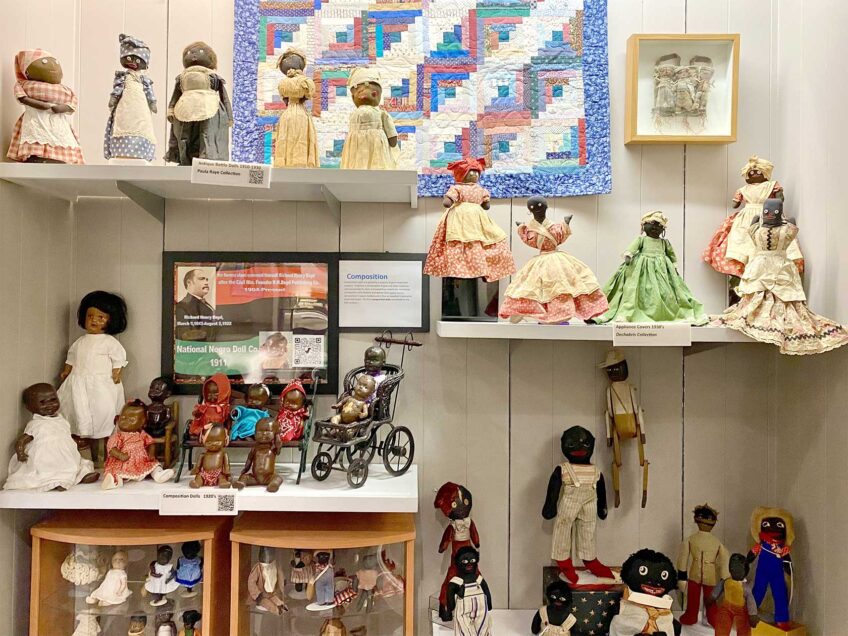Deceptive ‘Move’ dances on line between real and reel
“It’s funny,” notes Raya Green (Rutina Wesley) during a scene in the new film “How She Move,” “how one moment can change a million after it.”
Raya, a teenager raised by Jamaican parents in the rough, crime-stricken Jane-Finch neighborhood of Toronto, is devastated by her older sister Pam’s sudden drug overdose death. But what changes everything isn’t the death itself; it’s Raya’s quest to make herself different from her sister.
It’s easy to see why some viewers may think “How She Move,” the latest youth-targeted vehicle from Paramount Pictures and MTV Films, is just another hip-hop dance flick. Yes, there are dance battles. Yes, there are struggles with peer pressure, relationships, drugs and other issues facing urban teens today.
But beneath its gritty, stomping, acrobatic exterior, it’s about more than that, and it’s Wesley’s smart and talented Raya that makes the film something more than just a retread with updated moves.
“I had this plan to study hard in private school, study hard in medical school,” Raya says — a plan she was following, and one that was working pretty well. But when Pam dies, the aspiring doctor comes back home to be with her family, and has to go back to public school with her sister’s old friends.
Pam was a troubled young woman, but a great step dancer. Stepping is the main after-school pastime for Jane-Finch kids, and they are extremely talented. Raya is no exception, possessed of her sister’s talent and her passion.
But because Raya’s parents don’t see stepping as an appropriate after-school activity, she has to lie to be able to dance all the way to the top step competition, Step Monster, and its $50,000 prize.
Raya’s dance peers include Bishop (Dwain Murphy), leader of the Jane Street Junta (JSJ) crew and a possible love interest; Michelle Davis (Tre Armstrong), leader of the all-girl crew Fem Phatal; and Quake (Brennan Gademans), Bishop’s nerdy little brother who knows all the steps just from watching.
The Raya-Michelle relationship evokes a host of emotions throughout the film, from spite to friendship to betrayal and, finally, camaraderie. Early on, the tension between them explodes in a fight that leads the school principal to give her an ironic dose of community service: tutoring Michelle.
At first, spurned by her former friends, Raya resists her passion, calling stepping “a bunch of people with nothing better to do.” Here, unlike many other movies that use similar plot elements, dance isn’t a means to get away from a tough, urban life; instead, it’s synonymous with trouble. She notices that the culture surrounding stepping seems to just be “a whole lot of people killing themselves for things that don’t even matter.” But soon, she finds a cause to fight for within the world of step: Step Monster’s monster prize.
Raya figures the prize money is her ticket back to private school and hopes to become a part of Michelle’s team, but is soon reminded that the judges will “never give top dollar to a girls’ crew.” Well then, she thinks, why not a mixed-gender team? And so she aims high, for the top guys crew in the area, Bishop’s JSJ. The other members of the crew resist her, but she out-battles E.C. (Kevin Duhaney), sparking Bishop to say to the guys, “You wanna do some damage on the stage, you better do some damage here first.”
Soon, the after-school life — practicing, partying, hanging with “the wrong crowd” — starts to get to Raya, who’s now lying to her parents and getting dangerously close to being just like her sister. Luckily, her intellect keeps her relatively straight, though her smarts are viewed as a sort of arrogance by Michelle, who can’t stand to be one-upped by Raya on any level.
“You know why people start hanging out with people like this?” Michelle asks, referring to the hard Jane-Finch world around them. “’Cause it’s too hard being a fake-ass like you.”
And that’s the film’s central question: What’s fake and what’s real? Throughout the film, Raya struggles with her parents’ expectations of her, her med school game plan and her own passions, how the three interact, and how her resultant identity fits into the world.
In real life, dance is often used as an escape from a hard life. In reel life, dance may save you in the end, but it’s almost always seen as a pastime, not a career, and certainly not a solution for major league problems. “How She Move,” and protagonist Raya in particular, reveal this discrepancy, play with it, and try to make sense out of it.
“Just because I’m moving ahead doesn’t mean I’m going to leave everything behind,” Raya says to her mom. “School, step, you: it’s all me.”
Loving step doesn’t mean Raya’s going to wind up an addict like her sister; nor does wanting a degree mean she can’t stay passionate about and connected to the places and people she calls home.
A person can be multi-dimensional, can love aspects of all cultures and classes, and should be able to get along without being forced to forsake any one for any other.
Ultimately, that’s why “How She Move” is more than meets the eye — it can be seen as a typical street dance movie, but underneath the tight moves and hot costumes (especially the gold umbrellas and matching gold boots worn by the Fem Phatal), there’s a positive story about the importance of personal diversity and the importance of being who you want to be.






![Banner [Virtual] Art Gallery](https://baystatebanner.com/wp-content/uploads/2024/04/NJ-H_1-713x848.jpg)